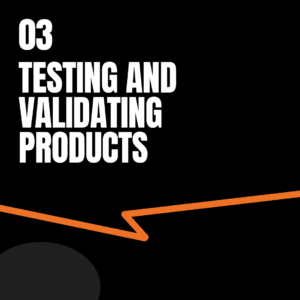Product Hunting Strategies for Shopify
In the fast-paced world of e-commerce, staying ahead of the competition requires constantly innovating and introducing new products to your Shopify store. Product hunting for shopify, the process of sourcing and selecting products to sell, plays a crucial role in the success of your online business. In this guide, we’ll explore effective strategies for product hunting on Shopify to help you find winning products that resonate with your target audience.
1. Introduction to Product Hunting
What is product hunting?
Product hunting involves researching, identifying, and sourcing products that have the potential to generate sales and profit for your Shopify store. It requires a combination of market research, trend analysis, and consumer insight to discover products that meet customer needs and preferences.
Importance of product hunting for Shopify store owners
Product hunting is essential for Shopify store owners to stay competitive and relevant in the ever-evolving e-commerce landscape. By regularly refreshing your product offerings and introducing new items, you can attract new customers, retain existing ones, and maximize revenue opportunities.
2. Researching Trending Products

Utilizing social media platforms
Monitor social media platforms such as Instagram, Facebook, and TikTok to identify emerging trends and popular products. Pay attention to viral content, hashtags, and influencer endorsements to gauge consumer interest and demand.
Exploring online marketplaces
Browse online marketplaces like Amazon, eBay, and Etsy to discover top-selling products and trending categories. Analyze customer reviews, ratings, and sales data to identify potential opportunities for your Shopify store.
Analyzing industry trends
Stay informed about industry trends and market dynamics by following industry publications, attending trade shows, and participating in online forums and communities. Keep an eye on consumer behavior shifts and emerging technologies that could impact product demand.
3. Identifying Niche Opportunities

Understanding target audience preferences
Research your target audience’s demographics, interests, and purchasing behaviors to identify niche markets and product niches that align with their needs and preferences.
Conducting keyword research
Use keyword research tools like Google Keyword Planner, SEMrush, and Ahrefs to identify relevant keywords and search terms related to your niche. Look for keywords with high search volume and low competition to target with your product offerings.
Analyzing competitors’ product offerings
Study your competitors’ product offerings, pricing strategies, and marketing tactics to identify gaps and opportunities in the market. Look for areas where you can differentiate your products and offer unique value to customers.
4. Evaluating Product Viability
Assessing demand and market saturation
Evaluate the demand for potential products by analyzing search volume, trend data, and keyword popularity. Avoid saturated markets with intense competition and focus on niches with untapped potential.
Calculating profit margins and costs
Estimate the profitability of potential products by calculating profit margins, production costs, and overhead expenses. Consider factors such as shipping costs, fulfillment fees, and advertising expenses when assessing the viability of a product.
Considering logistical and fulfillment challenges
Assess the logistical and fulfillment requirements of potential products, including sourcing, storage, and shipping considerations. Choose products that can be easily sourced, stored, and delivered to customers in a timely and cost-effective manner.
5. Testing and Validating Products

Launching minimum viable products (MVPs)
Test new products by launching minimum viable versions to gauge customer interest and demand. Start with a small batch of inventory and collect feedback from early adopters to iterate and improve your offerings.
Collecting feedback from customers
Solicit feedback from customers through surveys, reviews, and testimonials to understand their preferences and pain points. Use this feedback to refine your product offerings and tailor your marketing strategies to better meet customer needs.
Analyzing sales data and performance metrics
Track sales data, conversion rates, and other performance metrics to evaluate the success of your products. Identify top-performing products and optimize your product lineup based on customer preferences and market trends.
6. Scaling Successful Products
Investing in marketing and advertising
Promote your top-performing products through targeted marketing campaigns, social media advertising, and influencer partnerships to drive sales and increase brand visibility.
Expanding product variations and offerings
Diversify your product lineup by introducing variations, bundles, and complementary products to upsell and cross-sell to customers. Expand into related niches and categories to broaden your appeal and attract new customers.
Building brand reputation and loyalty
Focus on delivering exceptional customer service and building strong relationships with your customers to foster brand loyalty and repeat business. Encourage customer reviews and referrals to enhance your brand reputation and credibility.
7. Conclusion
Product hunting is a dynamic and iterative process that requires creativity, research, and strategic thinking. By following the strategies outlined in this guide and staying attuned to market trends and customer preferences, you can find and introduce winning products to your Shopify store that drive growth and success.
FAQs (Frequently Asked Questions)
- How often should I update my product lineup on Shopify?
- It’s recommended to regularly refresh your product offerings and introduce new items to keep your store fresh and engaging for customers. Aim to add new products at least once a month or as trends evolve.
- What are some ways to differentiate my products from competitors?
- You can differentiate your products from competitors by offering unique features, customization options, or value-added services. Focus on solving customer pain points and providing exceptional quality and service.
- How can I test the demand for a new product before investing in inventory?
- You can test the demand for a new product by launching a pre-order campaign, conducting market research surveys, or creating a landing page to gauge interest and collect email sign-ups from potential customers.
- What are some effective marketing strategies for promoting new products on Shopify?
- Effective marketing strategies for promoting new products on Shopify include social media advertising, email marketing campaigns, influencer partnerships, and content marketing. Experiment with different channels and tactics to reach your target audience effectively.
- How can I track the performance of my products on Shopify?
- You can track the performance of your products on Shopify by using built-in analytics and reporting tools, such as Shopify’s dashboard, Google Analytics, and third-party apps. Monitor key metrics like sales, conversion rates, and customer engagement to measure success.

